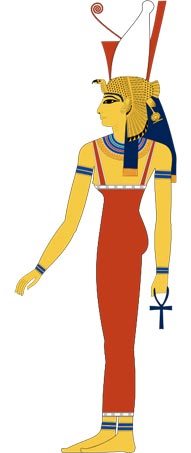About the Caches of the Gods
There are sixteen caches of the gods. Each cache contains a key to unlocking the special Pyramid Cryptex device which holds the secret location of the Pharaoh's Treasure (GC5JTAJ).
Twelve of the gods have true keys to the device, while four of the gods have false keys to mislead the careless adventurer. Each key can be found in the form of a symbol on the inside of the lid of the cache container.
The true keys must be discovered by visiting the god's caches and recording the key's image. once all twelve keys have been found you must determine their correct order and dial them into the levels of the Pyramid Cryptex.
If you successfully open the device, you will receive the final location of the Pharaoh's Treasure. If you are the first to open the device, your reward will be great indeed!
While not required, it is suggested that a digital camera to snap a shot of the keys for reference while solving the puzzle might be a good idea. Please do not share pictures of the keys with any other adventurers.
About Mut

Mut was a title of the primordial waters of the cosmos, Naunet, in the Ogdoad cosmogony during what is called the Old Kingdom, the third through sixth dynasties, dated between 2,686 to 2,134 BCE However, the distinction between motherhood and cosmic water later diversified and lead to the separation of these identities, and Mut gained aspects of a creator goddess, since she was the mother from which the cosmos emerged.
The hieroglyph for Mut's name, and for mother itself, was that of a vulture, which the Egyptians believed were very maternal creatures. Indeed, since Egyptian vultures have no significant differing markings between female and male of the species, being without sexual dimorphism, the Egyptians believed they were all females, who conceived their offspring by the wind herself, another parthenogenic concept.
Much later new myths held that since Mut had no parents, but was created from nothing; consequently, she could not have children and so adopted one instead.
Making up a complete triad of deities for the later pantheon of Thebes, it was said that Mut had adopted Menthu, god of war. This choice of completion for the triad should have proved popular, but because the isheru, the sacred lake outside Mut's ancient temple in Karnak at Thebes, was the shape of a crescent moon, Khonsu, the moon god eventually replaced Menthu as Mut's adopted son.
Lower and upper Egypt both already had patron deities–Wadjet and Nekhbet–respectively, indeed they also had lioness protector deities–Bast and Sekhmet–respectively. When Thebes rose to greater prominence, Mut absorbed these warrior goddesses as some of her aspects. First, Mut became Mut-Wadjet-Bast, then Mut-Sekhmet-Bast (Wadjet having merged into Bast), then Mut also assimilated Menhit, who was also a lioness goddess, and her adopted son's wife, becoming Mut-Sekhmet-Bast-Menhit, and finally becoming Mut-Nekhbet.
Later in ancient Egyptian mythology deities of the pantheon were identified as equal pairs, female and male counterparts, having the same functions. In the later Middle Kingdom, when Thebes grew in importance, its patron, Amun also became more significant, and so Amaunet, who had been his female counterpart, was replaced with a more substantial mother-goddess, namely Mut, who became his wife. In that phase, Mut and Amun had a son, Khonsu, another moon deity.
The authority of Thebes waned later and Amun was assimilated into Ra. Mut, the doting mother, was assimilated into Hathor, the cow-goddess and mother of Horus who had become identified as Ra's wife. Subsequently, when Ra assimilated Atum, the Ennead was absorbed as well, and so Mut-Hathor became identified as Isis (either as Isis-Hathor or Mut-Isis-Nekhbet), the most important of the females in the Ennead (the nine), and the patron of the queen. The Ennead proved to be a much more successful identity and the compound triad of Mut, Hathor, and Isis, became known as Isis alone—a cult that endured into the 7th century A.D. and spread to Greece, Rome, and Britain.